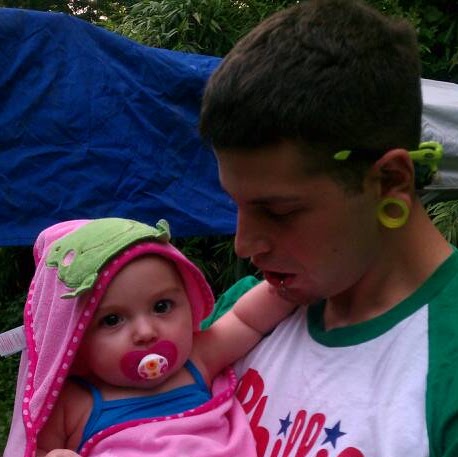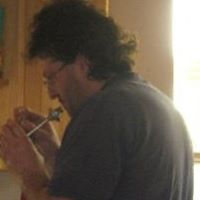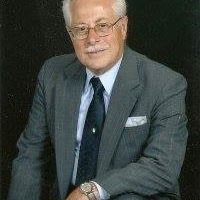Andrew A Valenti
age ~89
from Medford, NY
- Also known as:
-
- Andrew R Valenti
- Rae Ann Valenti
- Andy A Valenti
- Andrew Andrew
- Boubaris Isidoros Rv
- Valenti Andrew
- Valenti Medford
- Phone and address:
-
2919 Rhode Island Ave, Gordon Heights, NY 11763
6314476773
Andrew Valenti Phones & Addresses
- 2919 Rhode Island Ave, Medford, NY 11763 • 6314476773
- New Smyrna Beach, FL
- 55 Airport Rd, Eldred, NY 12732 • 8455570485 • 8545570485
- 49 Airport Rd, Eldred, NY 12732
- Highland, NY
- 277 Laclede Ave, Uniondale, NY 11553 • 5165380779
- 227 Laclede Ave, Uniondale, NY 11553
- Sullivan, NY
- Glendale, NY
- Lee, FL
Resumes

Andrew Valenti
view sourceLocation:
United States
Name / Title
Company / Classification
Phones & Addresses
BRICKWORKS CORP
Home Builders · Mudjacking · Concrete Repair · Stamped Concrete · Handyman Service · Hardscaping · Masonry · Basement Remodeling
Home Builders · Mudjacking · Concrete Repair · Stamped Concrete · Handyman Service · Hardscaping · Masonry · Basement Remodeling
31 Hawley Ave, West Islip, NY 11795
6316642307
6316642307
Partner
Performance Prtnrshp
Management Consulting Services
Management Consulting Services
77 7 Ave, New York, NY 10011
ANDREW VALENTI, LTD
55 Airport Rd, Eldred, NY 12732
Us Patents
-
Portable Outdoorsman's Seat
view source -
US Patent:48009890, Jan 31, 1989
-
Filed:Jun 10, 1988
-
Appl. No.:7/205377
-
Inventors:Andrew Valenti - Uniondale NY
-
International Classification:A45F 326
A01M 3102 -
US Classification:182187
-
Abstract:A outdoorsman's seat comprising a rigid rectangular seat member having canted opposed slots in its longitudinal edges to receive two limbs of a supporting line adapted to be secured to two spaced apart trees. The opposed inclined slots result in a resultant force vector which holds the seat more tightly and securely with increased weight but nevertheless affords easy sliding movement of the seat along the limbs as well as attachment and detachment therefrom.
-
Device Useful For Growing And/Or Testing Biological Materials
view source -
US Patent:46861904, Aug 11, 1987
-
Filed:Feb 19, 1986
-
Appl. No.:6/831147
-
Inventors:Eva B. Cramer - Port Washington NY
Linda C. Milks - Brooklyn NY
Gregory P. Conyers - Brooklyn NY
Andrew Valenti - Uniondale NY
Antonio Perez - Flushing NY -
Assignee:The Research Foundation of State University of New York - Albany NY
-
International Classification:C12M 134
-
US Classification:435291
-
Abstract:A device useful for the in vitro study of cell migration across a monolayer of epithelial cells while simultaneously measuring the transepithelial electrical resistance of the epithelial monolayer is provided and is characterized as including at least three components, a cylinder, a chamber and a punch. The cylinder is designed for tissue culture, the chamber provides a controlled space and/or environment for the cylinder and the punch is provided to cut the epithelial monolayer and its substrate.
-
Bone Boring Instrument
view source -
US Patent:47828331, Nov 8, 1988
-
Filed:Feb 19, 1987
-
Appl. No.:7/016587
-
Inventors:Thomas A. Einhorn - New York NY
Andrew Valenti - Uniondale NY
Matthew Alves - Kalamazoo MI -
International Classification:A61B 1716
-
US Classification:128310
-
Abstract:An instrument for the boring of bones to remove a cylindrical section of bone for medical purposes has a one-way drive means which allows the surgeon to oscillate his hand motion while the instrument cuts bone in one direction only. The instrument has a trephine engaging mechanism which allows for the interchangeability of trephines so that a plurality of different types and sizes of trephines can be used to obtain bone cores from a range of bone types.
-
Electrode Catheter Testing Device
view source -
US Patent:48578576, Aug 15, 1989
-
Filed:Nov 23, 1988
-
Appl. No.:7/275277
-
Inventors:Andrew Valenti - Uniondale NY
Antonio Perez - Flushing NY
Seymour Ben-Zvi - Brooklyn NY -
Assignee:The Research Foundation of State University of New York - New York NY
-
International Classification:G01R 3112
-
US Classification:324555
-
Abstract:An electrode catheter testing device is shown which provides a practical means for determining, immediately prior to use, whether an electrode catheter is functioning properly. The device includes a pair of telescoping tube members axially displaced by means of a spring and enclosing a braided wire cylinder which defines a core for receiving the electrode end of an electrode catheter. When the spring is manually compressed, the braided wire cylinder's diameter is increased to permit insertion of the catheter. When the spring is released, the braided wire cylinder is elongated and its diameter is contracted such that the cylinder contacts the electrode rings shorting them together. Continuity to each electrode ring may then be measured electrically using a suitable instrument such as a ohmmeter.
License Records
Andrew Michael Valenti
License #:
1281 - Active
Category:
Physical Therapy
Issued Date:
Jan 23, 2014
Effective Date:
Jan 23, 2014
Expiration Date:
Nov 1, 2017
Type:
Physical Therapist Assistant
Andrew Michael Valenti
License #:
980545 - Expired
Category:
Swimming Pool Operator
Issued Date:
Apr 13, 2012
Effective Date:
Apr 18, 2016
Expiration Date:
Apr 13, 2016
Type:
Swimming Pool Operator
Googleplus

Andrew Valenti

Andrew Valenti

Andrew Valenti

Andrew Valenti

Andrew Valenti

Andrew Valenti

Andrew Valenti
Plaxo

Andrew Valenti
view sourceArlington, MAPresident and Senior Consultant at Valenti Partner... Past: President and Senior Consultant at Maranatha Solutions Executive-level consultant providing project management and educational services to health care and global financial institutions■ Extensive experience with... Executive-level consultant providing project management and educational services to health care and global financial institutions■ Extensive experience with project management best practices and software development methodologies■ Career experience in managing the integration of health care...

Andrew Valenti
view sourceWinter Springs, FL
Youtube
Classmates

Andrew Valenti, Sun Valle...
view source
Andrew Valenti | Grover C...
view source
Saint Joseph School, Brad...
view sourceGraduates:
Andy Valenti (1979-1982),
Elizabeth Grabenstein (1991-1996),
Glenna Barker (1998-2002),
Drew Niesiobedzki (1956-1965)
Elizabeth Grabenstein (1991-1996),
Glenna Barker (1998-2002),
Drew Niesiobedzki (1956-1965)

New York High School of P...
view sourceGraduates:
Bruce Kirschner (1961-1965),
Edith Goldberg (1959-1963),
Donald Hausbeck (1949-1953),
Miriam Gonzalez (1980-1984),
Andrew Valenti (1978-1982)
Edith Goldberg (1959-1963),
Donald Hausbeck (1949-1953),
Miriam Gonzalez (1980-1984),
Andrew Valenti (1978-1982)

NYU-New York University, ...
view sourceGraduates:
Andrew Valenti (1974-1978),
Vipin Thomas (2003-2007),
Ralph Powell (1975-1979)
Vipin Thomas (2003-2007),
Ralph Powell (1975-1979)

Rabun Gap-Nacoochee High ...
view sourceGraduates:
Andy Valenti (1982-1986),
Terri Lynne Hartselle (1976-1977),
John Babcock (1983-1986),
Debbie James (1972-1976)
Terri Lynne Hartselle (1976-1977),
John Babcock (1983-1986),
Debbie James (1972-1976)

Manatee Community College...
view sourceGraduates:
Andy Valenti (1986-1987),
Jeffrey Muenzmay (1985-1986),
Gary Kleynen (2004-2005)
Jeffrey Muenzmay (1985-1986),
Gary Kleynen (2004-2005)

Andrew Valenti
view source
Andrew Valenti
view source
Andrew Valenti
view source
Andrew Valenti
view source
Andrew Valenti
view source
Andrew Valenti
view source
Andrew Valenti
view source
Andrew Valenti
view sourceFlickr
Myspace
Get Report for Andrew A Valenti from Medford, NY, age ~89














